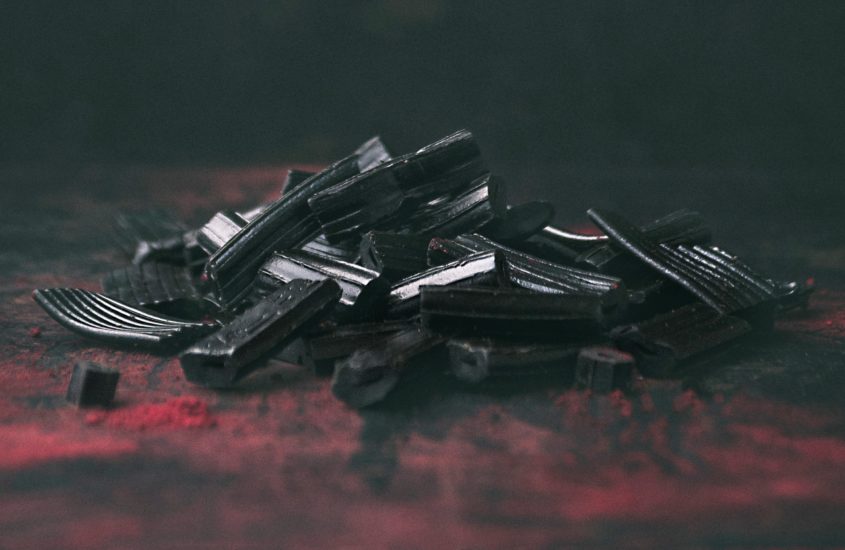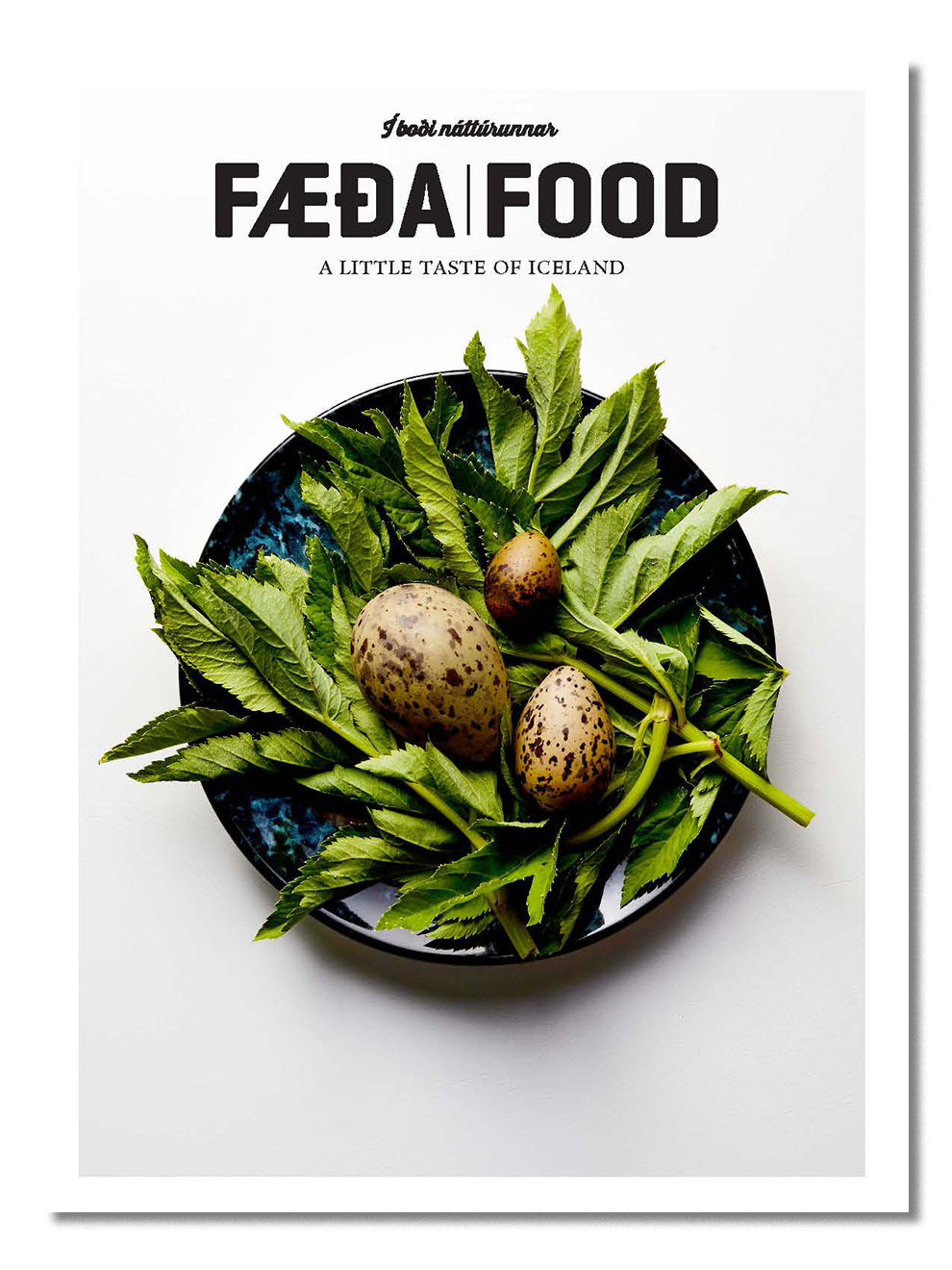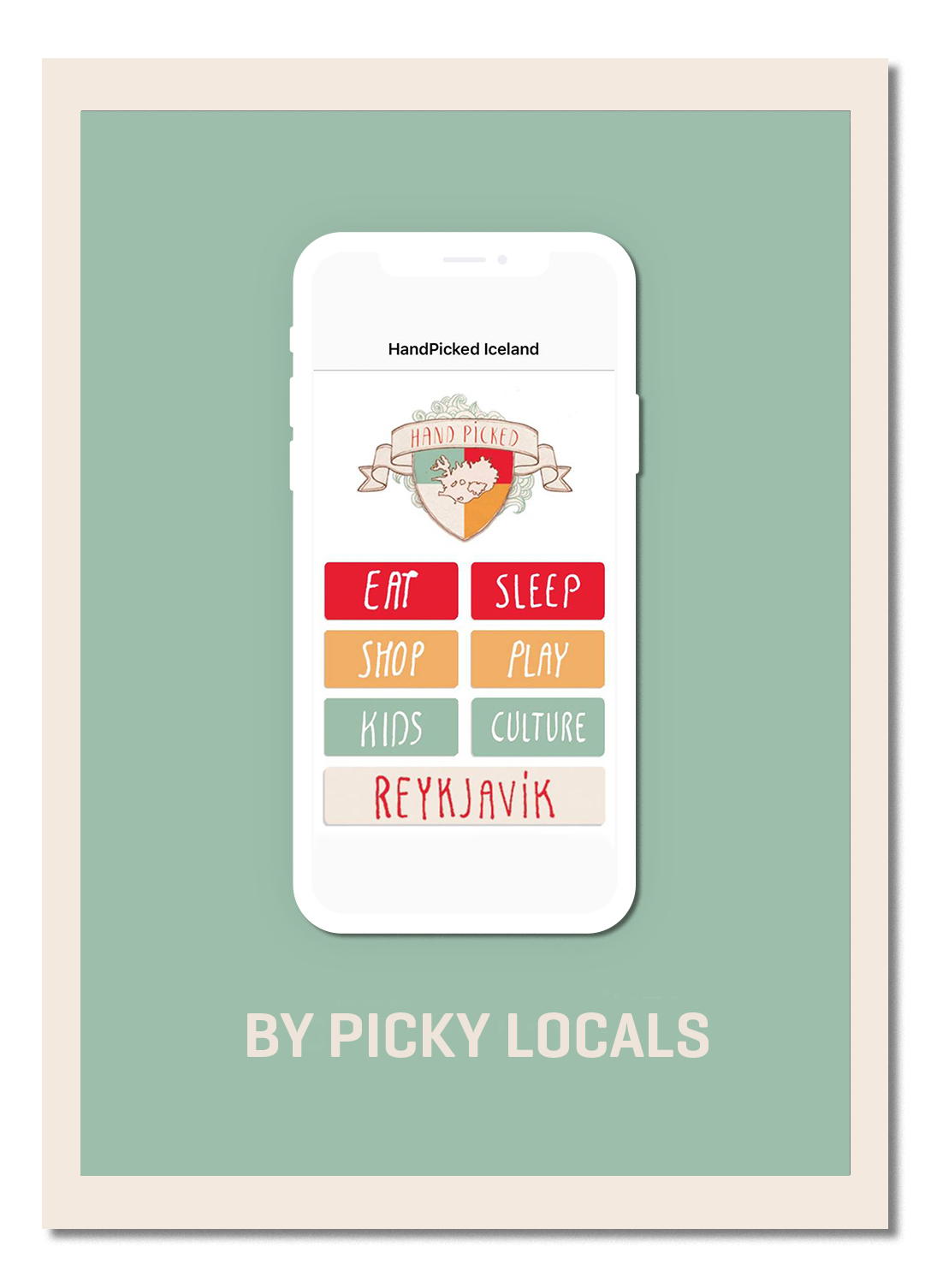
Sweet or Salty Obsession?
Text MARTA BIERNAT Photo ADAM BIERNAT
Icelanders are obsessed with black liquorice. The liquorice, sweet, salty or salmiak,
is often combined with other sweet components like chocolate, coconut, marzipan
and salt and pepper. The most popular combo is sweet liquorice and chocolate.
A very sought after dainty, revered by Scandinavians far and wide, and available in hundreds of variations. Raven-black, glossy, elegantly gelled, with an intriguing – slightly herbally, and an absolutely unmistakable taste: that’s liquorice. Have you ever wondered what the big deal with liquorice is? Why do so many people in Scandinavia choose it as their favourite sweet? For years, residents of Nordic countries have been among the top consumers of liquorice per capita in the world. Definitely, this candy must have some secrets. After all, there must be a reason for its extreme popularity. The case is straightforward – either you love it madly, or you hate it with a similar passion. Intermediate states are extremely rare. When you set foot in Scandinavia, you should know you are in a liquorice paradise, with endless varieties and very solid opinions on what is the best.
Liquorice plays with people’s taste buds in incredible ways. Not only is every bite a little bit different from another, but also it can be sweet and bitter at the same time with a potential power to overwhelm. Nordic locals will confess to the allure of liquorice and the battle you cannot win; with every bite, it lures you in with a whisper that grows into a thunderous roar to eat more. This black gold turns into black magic as you struggle to resist.
A SHORT HISTORY OF PITCH-BLACK GOLD
This interesting delicacy is made from an equally interesting plant, also called liquorice (Glycyrrhiza glabra). The plant itself looks quite ordinary, and at first glance, you would not expect the treasure that can be made from this medium-high bush. Liquorice was considered a superfood well in advance of that term being popularized. The amazing properties of liquorice, specifically its roots have been known for a very long time. So, let’s move back to the old times for a moment.
Liquorice was used in ancient Egypt, Greece, Rome, the Middle East and later also in China. In all these places it was known as a popular remedy for a cough, sore throat, cold and hay fever. It also had an ability to slake thirst. What is more, it cured asthma, ulcers, and even prevented caries. In the Middle Ages, people began to assign magical properties to liquorice, which supposedly led to miraculous cures. It was believed that it gave vitality and longevity. Historians have no doubt that it was consumed by high society and that liquorice kept Pharaohs and Alexander the Great healthy. The last-mentioned gentleman also kindly prepared tonics with it for his army. There are even tales that this famous king won all of his military campaigns because of the liquorice which cured the soldiers and gave them strength when they did not have enough food and water.
1760 was a year of real revolution. English pharmacist George Dunhill started his experiments with a diluted extract of liquorice root. He merely added sugar and a few other ingredients. It was a solemn moment – liquorice was born as a delicacy, not just medication. Shortly after the news about this curiosity spread around the United Kingdom and soon almost the whole of Europe. Winning the hearts of the Dutch and Scandinavians especially.
Nowadays all kinds of liquorice candies can be made in two ways. Smaller companies use so-called cornstarch moulding process. In this case, the hot, liquid liquorice is poured into different shaped moulds. When it has cooled, the sweets are ready. The moulds are turned, and candies naturally fall out. Larger companies also use moulds, but in this case, the hot liquorice liquid is heated to the point where it thickens to a consistency similar to dough. It is already flavoured. Then it is embossed through formers which give it a rope shape. It all depends on the imagination of the company to cut the various configurations.
LIQUORICE FEVER IN ICELAND
Every Scandinavian nation has their favourite type of liquorice candies, and Iceland is no exception. In Iceland liquorice is known as lakkrís. Icelanders have their own version of liquorice that they combine with almost anything. It is more sweet than salty and has a unique taste. Lakkrís can be found in crazy shapes and forms, in combination with chocolate, coconut and other sweet components. Many have a memory from childhood using the liquorice as a straw in their soda, and the most popular form is to combine the sweet lakkrís with milk chocolate! In the last decades, Icelandic candy factories have raced to make innovative combinations of the two, and this golden combination of chocolate and liquorice is one of the things that Icelanders miss most when living abroad. In addition, in Iceland, you can stumble upon the lakkrís taste in cakes, ice cream and shakes. Widely popular is also a chewing gum of this flavor and some even top off their popcorn with a shake of liquorice salt! Perhaps it’s only flaw, one that many are in denial of, is that in large quantities, liquorice can increase blood pressure. So maybe this irresistible treat deserves the title of femme fatale among all Nordic sweets.


